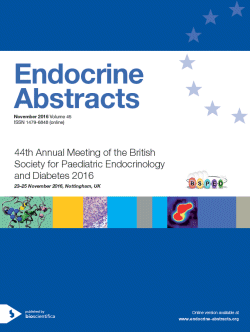Searchable abstracts of presentations at key conferences in endocrinology

44th Meeting of the British Society for Paediatric Endocrinology and Diabetes
Poster Presentations
Pituitary and growth
ea0045p64 | Pituitary and growth
Abstract unavailable
ea0045p66 | Pituitary and growth



